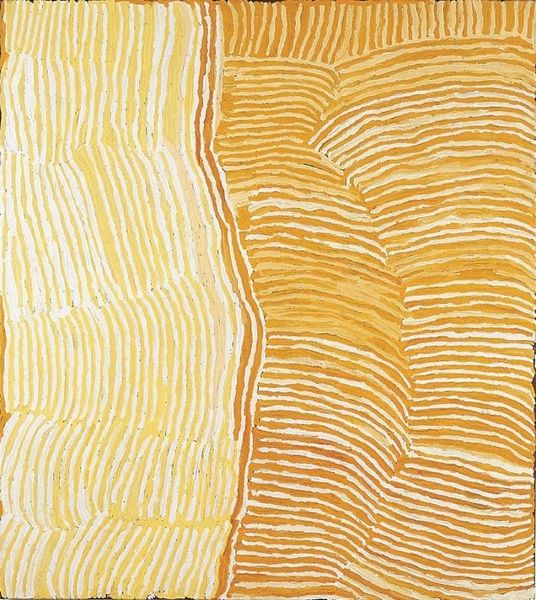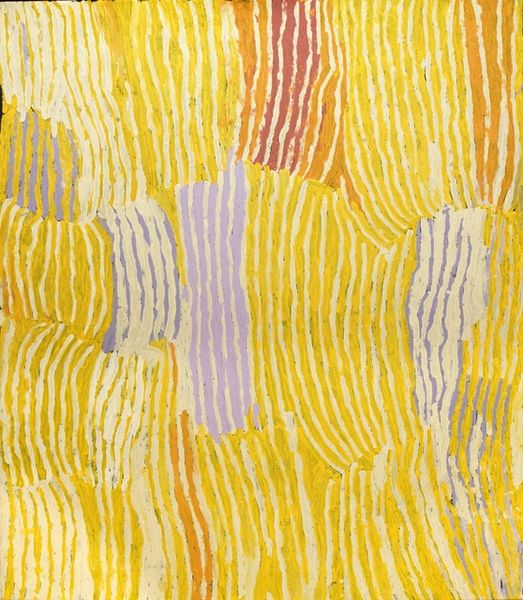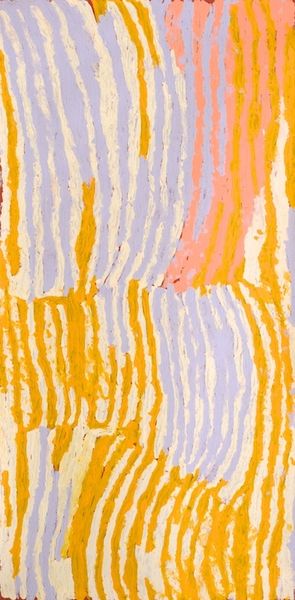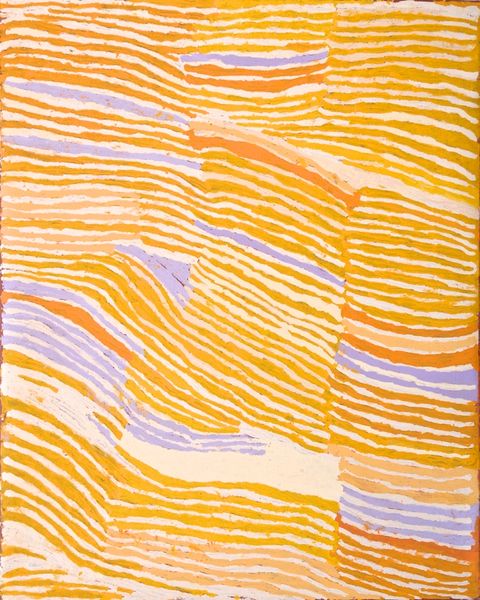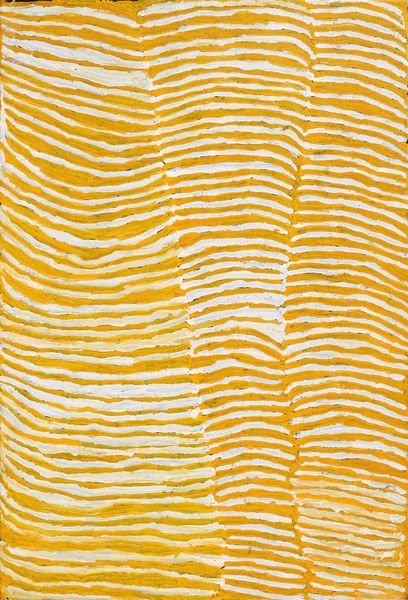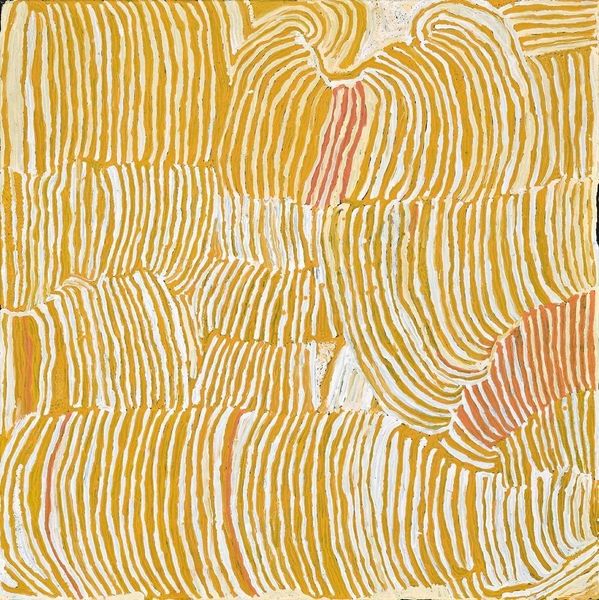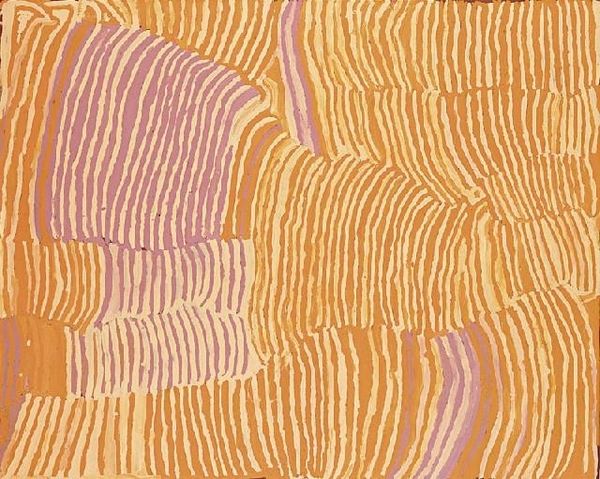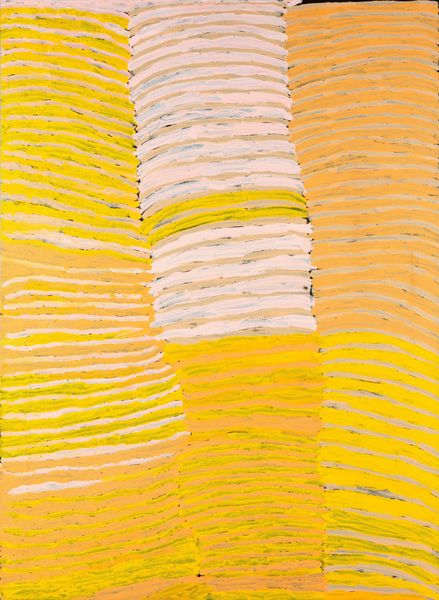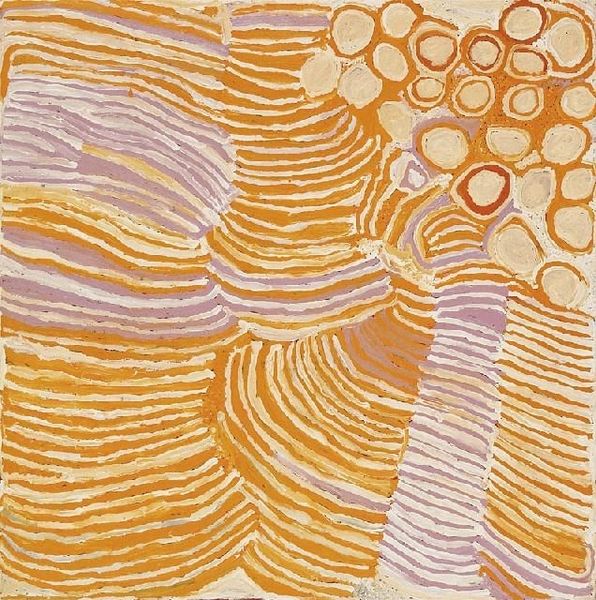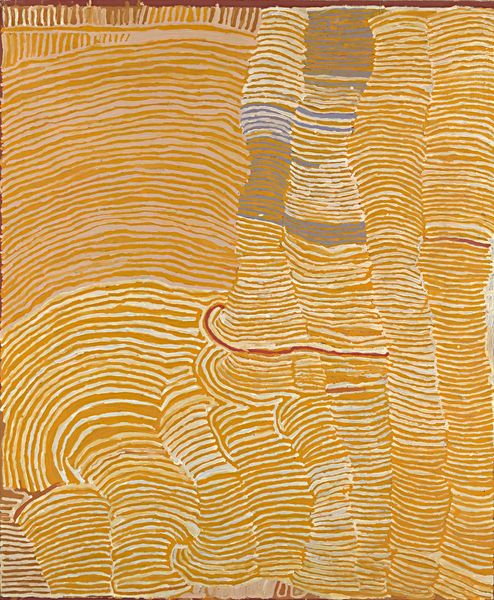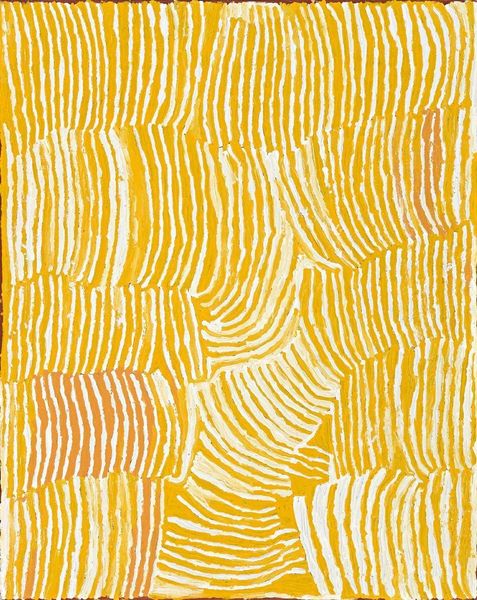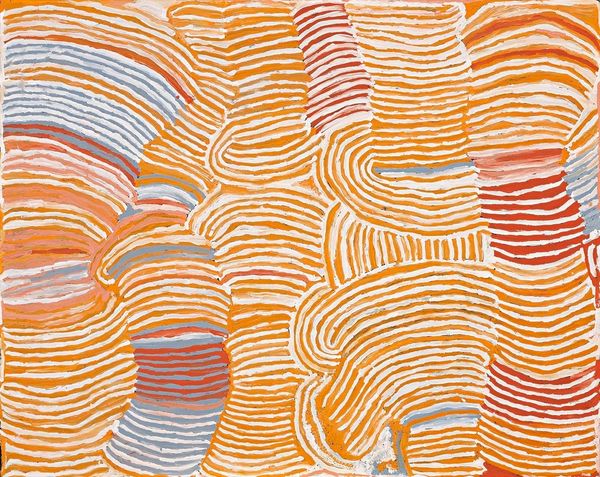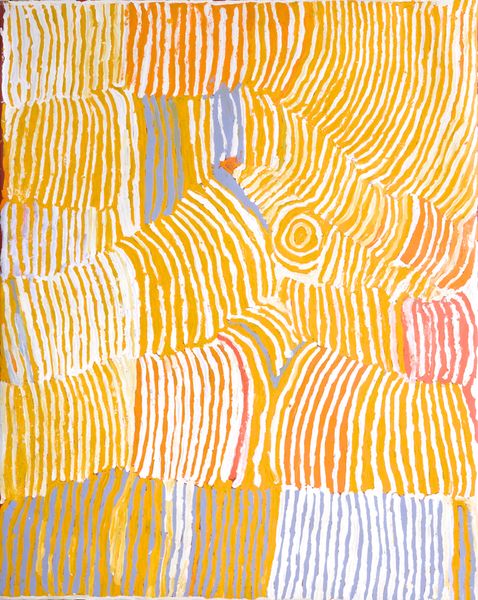
acrylic-paint
#
abstract expressionism
#
abstract painting
#
acrylic-paint
#
geometric pattern
#
organic pattern
#
abstraction
Copyright: Makinti Napanangka,Fair Use
Curator: I'm struck by the vibrancy and the texture – it feels almost like woven fabric. The artwork we're looking at today is an untitled piece by Makinti Napanangka, completed in 2007 using acrylic paint. Editor: Immediately, it gives me a feeling of immense heat, that raw desert sun. But beyond the heat, it suggests a subtle, underlying structure, perhaps of a vast landscape seen from above. Curator: I see that. Napanangka, an Indigenous Australian artist, often depicted the landscape and dreaming stories of her culture. This work, while abstract, certainly hints at the ancestral narratives embedded within the land itself. Note how these striations might represent topographical layers, or even spiritual pathways. Editor: Absolutely. The application of acrylic—a distinctly modern material—is intriguing. It removes the artist slightly from the traditional earth pigments and emphasizes the translation of cultural memory into contemporary form. The repeated strokes create this palpable sense of layering and accumulation – hours spent building this visual texture. Curator: Indeed, this act of repetition carries weight, culturally and perhaps psychologically. It could be a meditation on the enduring power of the dreamtime, visualized as a cyclical process of creation and recreation. It's compelling how she uses abstraction not to obscure meaning but, arguably, to deepen its resonance. Editor: It's a remarkable contrast, the modern paint and traditional narrative. It's that tension, that collision, that reveals the constant process of negotiation and preservation of identity. The warm hues, too, might be linked to commodity. Is this an abstracted image of iron ore, being excavated, and shipped around the world? The colors definitely make me consider production and consumption. Curator: A fascinating idea! It prompts us to consider the complex layers inherent to the work, where tradition and modernity are constantly renegotiated, not necessarily clashing but existing in conversation. The simplicity of mark making belies the intricacy of meanings embedded within it. Editor: Well, it’s certainly made me rethink my own assumptions about abstraction and its capacity to carry such potent cultural information. The texture in particular really helps transmit an incredible sense of embodied work. Curator: Agreed. It leaves one thinking about how imagery, seemingly devoid of direct representation, can speak volumes about history and cultural survival.
Comments
No comments
Be the first to comment and join the conversation on the ultimate creative platform.

